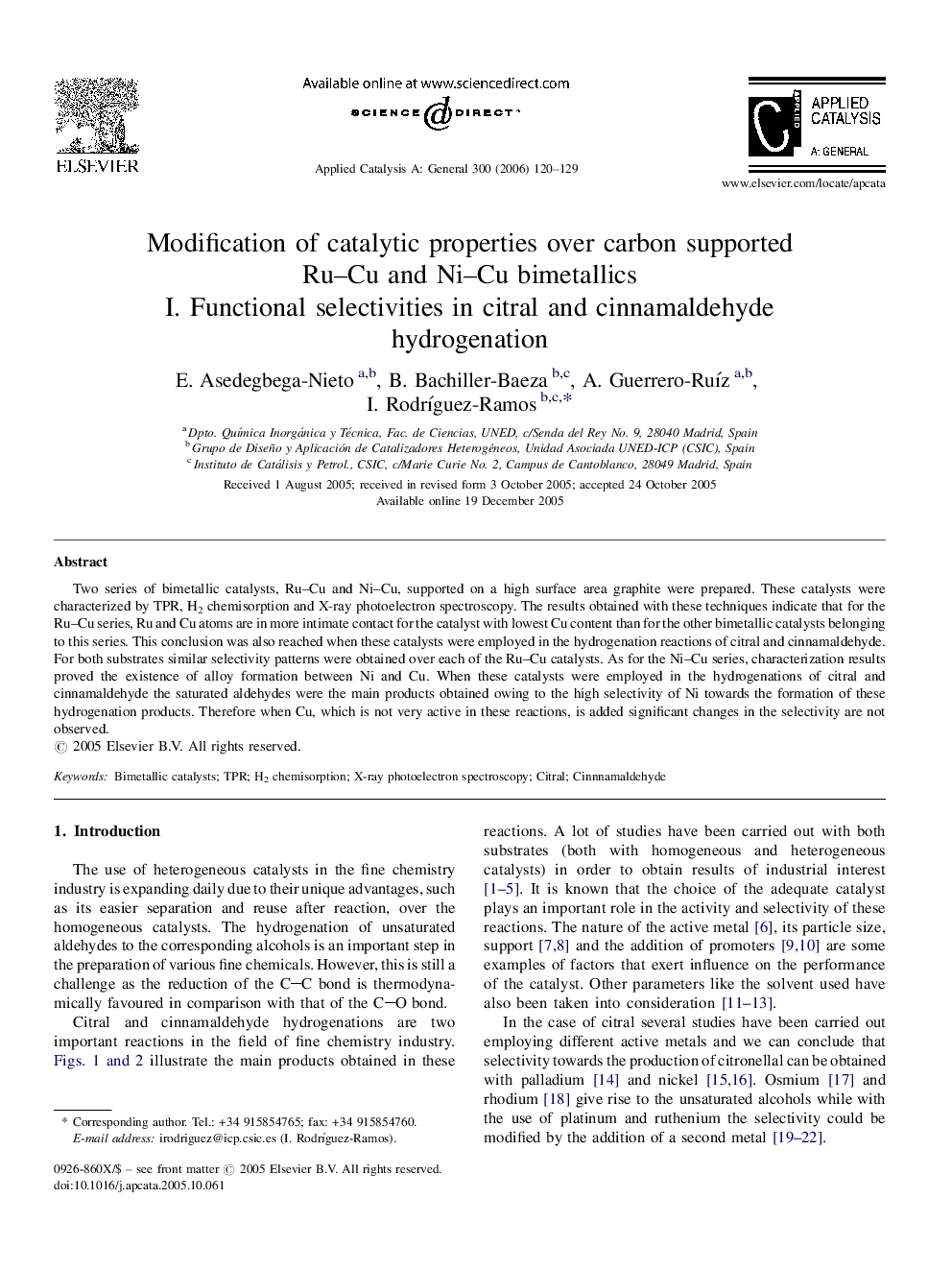| Article ID | Journal | Published Year | Pages | File Type |
|---|---|---|---|---|
| 44048 | Applied Catalysis A: General | 2006 | 10 Pages |
Two series of bimetallic catalysts, Ru–Cu and Ni–Cu, supported on a high surface area graphite were prepared. These catalysts were characterized by TPR, H2 chemisorption and X-ray photoelectron spectroscopy. The results obtained with these techniques indicate that for the Ru–Cu series, Ru and Cu atoms are in more intimate contact for the catalyst with lowest Cu content than for the other bimetallic catalysts belonging to this series. This conclusion was also reached when these catalysts were employed in the hydrogenation reactions of citral and cinnamaldehyde. For both substrates similar selectivity patterns were obtained over each of the Ru–Cu catalysts. As for the Ni–Cu series, characterization results proved the existence of alloy formation between Ni and Cu. When these catalysts were employed in the hydrogenations of citral and cinnamaldehyde the saturated aldehydes were the main products obtained owing to the high selectivity of Ni towards the formation of these hydrogenation products. Therefore when Cu, which is not very active in these reactions, is added significant changes in the selectivity are not observed.
